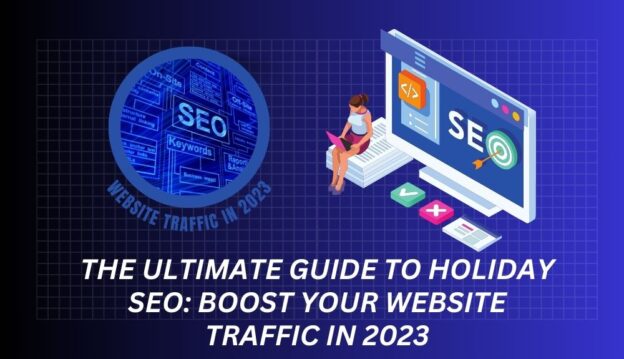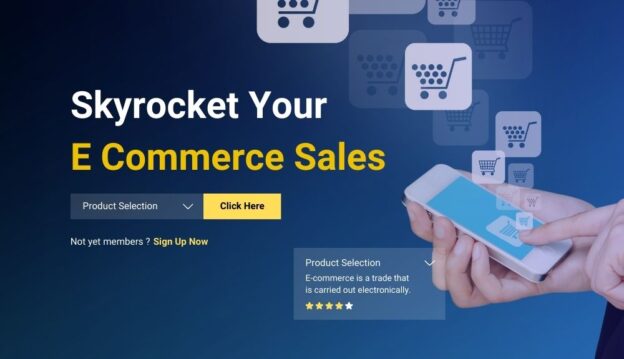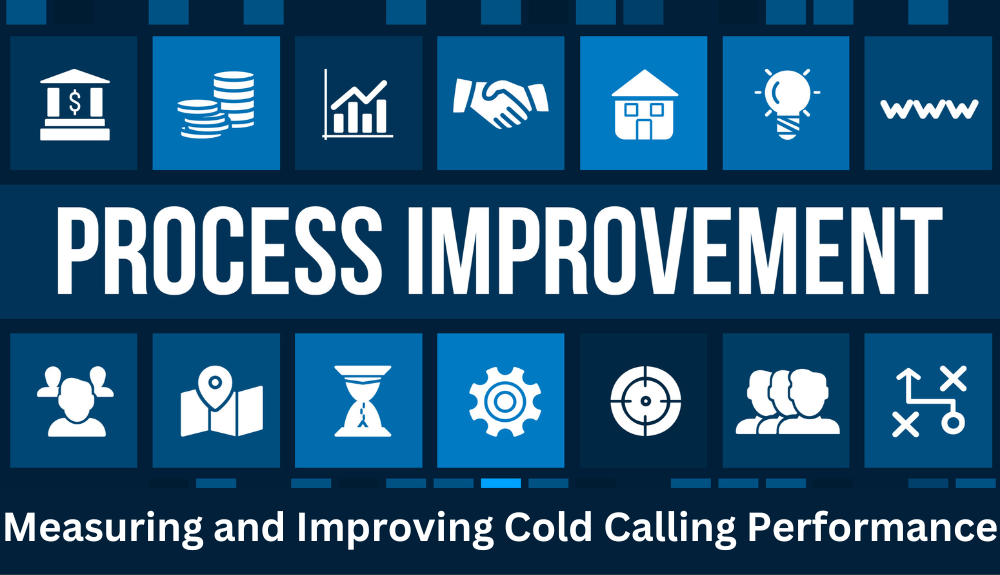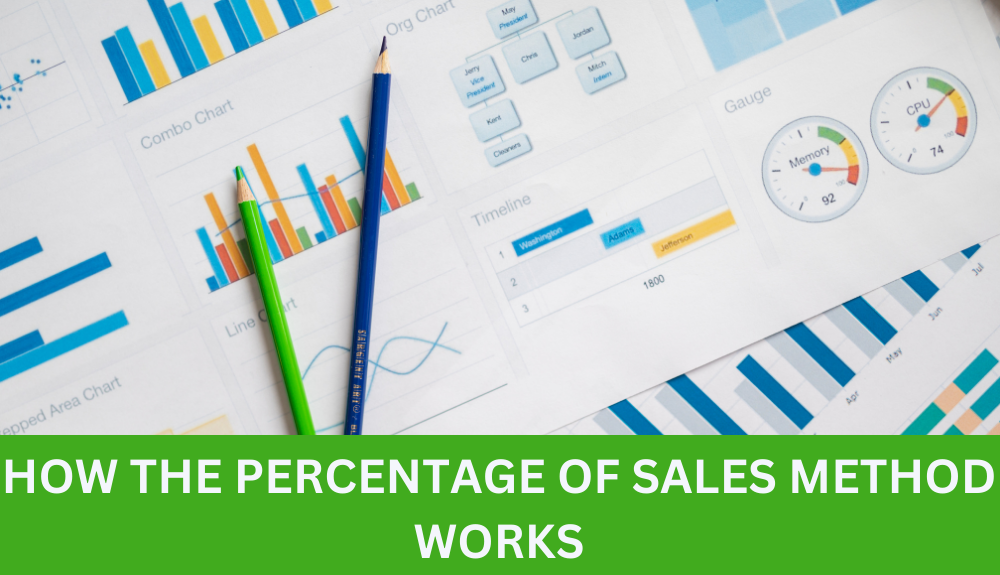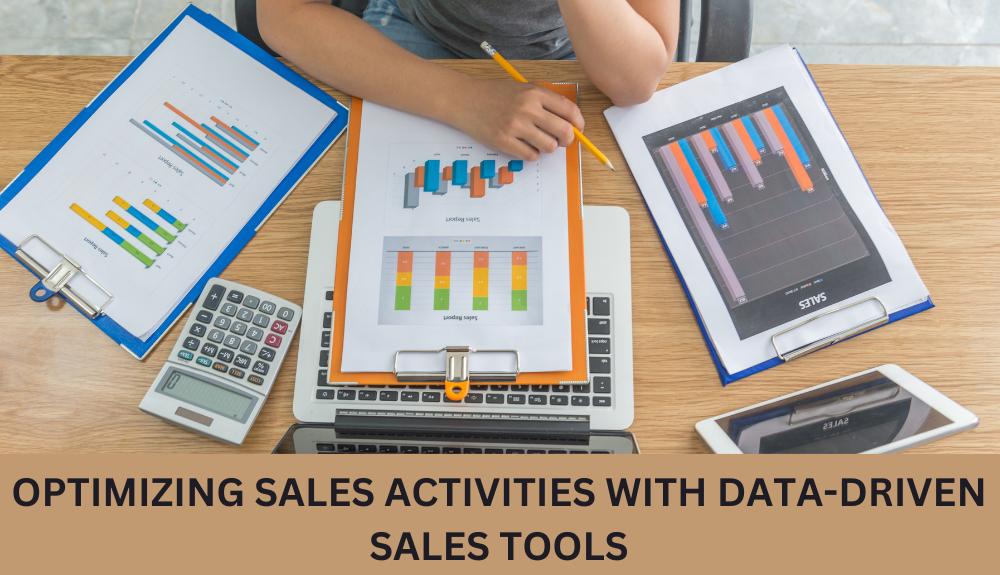Are you ready to make the most of the holiday season and boost your website’s visibility? In this ultimate guide to holiday SEO, we’ll provide you with essential tips and tricks to drive more organic traffic, increase conversions, and stay ahead of the competition in 2023.
Picture this: Your online store is beautifully decorated with festive content, and you’ve optimized your product pages with the most appropriate keywords. But are you really maximizing your website’s potential? With the holiday retail sale being a golden opportunity for online retailers, it’s crucial to have a solid Christmas SEO strategy in place.
Throughout this blog, we’ll delve into various aspects of holiday SEO, from targeting seasonal keywords to optimizing your site’s performance and engagement. Learn how to avoid common SEO mistakes, effectively leverage social media, and make the most of Black Friday, Cyber Monday, and other key events. We’ll also discuss the importance of a long-term SEO strategy and how to create high-quality content that resonates with your target audience.
Get ready to unlock the full potential of your website this holiday season with our expert insights and actionable advice. It’s time to take your SEO game to the next level and make this the most lucrative and successful holiday season yet.
10 Essential SEO Tips and Tricks to Boost Holiday Traffic in 2023
Welcome to our ultimate guide on boosting your website’s holiday traffic in 2023 through essential SEO tips and tricks. The holiday season presents a golden opportunity for online businesses to maximize their visibility, drive organic traffic, and increase conversions. In this section, we will explore ten key strategies that will set you up for success.
1. Optimize Your Website for Seasonal Keywords:
Thorough keyword research is crucial for targeting holiday-related search queries. Identify the most appropriate keywords that align with your products or services and incorporate them strategically into your website’s content.
2. Create and Optimize Holiday-Specific Content:
Plan and create high-quality, SEO-optimized content focusing on holiday-related topics. Offer valuable resources, engaging blog posts, and informative guides that capture the interest of your target audience.
3. Conduct Competitive and Consumer Analysis:
Analyze your competitors’ SEO strategies to gain insights into the best practices in your industry. Understand consumer behavior during the holiday season to tailor your content and offerings accordingly.
4. Implement Technical SEO Optimizations:
Enhance your website’s visibility by implementing technical SEO techniques such as semantic SEO, schema markup, and user-generated content. These optimizations improve search engine understanding and indexing of your web pages.
5. Optimize for Mobile and Page Speed:
Ensure your website is mobile-friendly and optimized for speed, as mobile searches and fast page load times are critical factors for user experience and search engine rankings.
6. Leverage Social Media and Influencer Marketing:
Leverage the power of social media platforms and influencer marketing to promote your holiday campaigns, special offers, and content. Engage with your audience and encourage social sharing for increased visibility.
7. Monitor and Analyze SEO Performance:
Regularly track and analyze your SEO performance metrics using tools like Google Analytics and Search Console. Evaluate the effectiveness of your strategies and make data-driven adjustments to optimize your holiday SEO efforts.
8. Optimize Your Landing Pages and Product Pages:
Ensure your landing pages and product pages are optimized for holiday-specific SEO. Include relevant keywords, compelling descriptions, and enticing visuals to attract and convert potential customers.
9. Create Festive and Engaging Visual Content:
Capture the festive spirit through visually appealing content. Incorporate holiday-themed images, videos, and infographics that resonate with your audience and encourage sharing.
10. Offer Exclusive Deals and Promotions:
Take advantage of the holiday season by offering exclusive deals and promotions to entice new customers and incentivize repeat business. Highlight these offers prominently on your website and through various marketing channels.
Implementing these essential SEO tips and tricks will help you optimize your website for increased visibility, organic traffic, and conversions during the holiday season in 2023. Stay tuned as we dive deeper into each strategy in the following sections.
Understanding the 2023 Holiday Landscape
The holiday season is a crucial time for businesses to optimize their SEO strategies and drive traffic to their websites. As we approach 2023, it is essential to understand the evolving holiday landscape and the key trends that will shape SEO strategies for the upcoming season.
Evolving Consumer Behavior
Consumer behavior during the holiday season has undergone significant changes in recent years. With the increasing popularity of online shopping, consumers now prefer the convenience and ease of purchasing products and services from the comfort of their homes. This shift in behavior presents an opportunity for businesses to tap into the online market and optimize their SEO efforts accordingly.
Mobile Dominance
Mobile devices continue to dominate online shopping, and this trend is expected to grow even more in 2023. With the increasing number of people using smartphones and tablets to browse and make purchases, it is crucial for businesses to ensure their websites are mobile-friendly and optimized for mobile search. Mobile responsiveness and fast loading speed are critical factors that can make or break your SEO success during the holidays.
Rise of Voice Search
Voice-controlled virtual assistants like Amazon Alexa and Google Assistant have become an integral part of many households. Voice search is on the rise, and it is vital for businesses to optimize their content for voice queries. Long-tail keywords and natural language phrases should be part of your keyword strategy to capture voice search traffic during the holiday season.
Personalization and User Experience
Personalization has become an essential aspect of online shopping experiences. Consumers expect tailored recommendations and content based on their preferences and browsing history. By leveraging artificial intelligence and machine learning algorithms, businesses can provide personalized experiences that enhance user engagement and increase conversions.
Social Media Influence
Social media platforms continue to play a significant role in shaping consumer purchasing decisions. Businesses should integrate social media marketing with their SEO strategy for the holiday season. Engaging with your audience through social media can increase brand visibility, drive traffic, and generate leads.
Conclusion
Understanding the evolving holiday landscape is crucial for businesses aiming to maximize their SEO efforts in 2023. By considering the changing consumer behavior, mobile dominance, voice search, personalization, and social media influence, businesses can develop effective SEO strategies and drive more organic traffic to their websites during the holiday season.
Keyword Research for the Holidays

Thorough keyword research is essential for targeting seasonal search queries and maximizing your website’s visibility during the holidays. By identifying the most relevant and popular keywords, you can optimize your content to attract organic traffic and increase your chances of ranking higher in search engine results. Here are some key steps to consider:
1. Start with a holiday-focused keyword list: Brainstorm and compile a list of keywords related to holidays, seasonal events, and popular shopping periods like Black Friday and Cyber Monday. Include variations and long-tail keywords to capture a wide range of search queries.
2. Use keyword research tools: Take advantage of keyword research tools like Google Keyword Planner, SEMrush, or Moz Keyword Explorer to expand your holiday keyword list. These tools provide valuable insights into search volume, competition, and related keywords.
3. Analyze competitor keywords: Study your competitors’ websites and identify the keywords they are targeting. This can help you discover additional keywords you may have missed and gain insights into their SEO strategies.
4. Consider search intent: Understand the intent behind holiday-related search queries. Are users looking for gift recommendations, holiday decorating ideas, or discounts? Tailor your keyword selection to match the intent of your target audience.
5. Prioritize relevance and search volume: Look for keywords that are both relevant to your business and have a significant search volume. Focus on long-tail keywords that are more specific and have less competition.
6. Optimize landing pages and product descriptions: Incorporate the identified keywords naturally into your landing page content and product descriptions. Ensure that the keywords flow smoothly within the context of the page and provide valuable information to users.
Remember, keyword research is an ongoing process. Monitor the performance of your chosen keywords and make necessary adjustments based on analytics data. By conducting thorough keyword research, you can optimize your website for holiday-related searches and drive targeted organic traffic to your site.
Planning Your Strategy with Competitive and Consumer Analysis
To maximize the effectiveness of your holiday SEO strategy, it’s crucial to conduct in-depth competitive and consumer analysis. By understanding your competitors’ SEO strategies and gaining insights into consumer behavior during the holiday season, you can make informed decisions and tailor your approach for better results.
Analyzing Competitors’ SEO Strategies
1. Identify your top competitors: Begin by identifying the websites that consistently rank well for relevant holiday-related keywords. Analyze their content, backlink profiles, and on-page optimizations.
2. Assess their keyword targeting: Look for the keywords they are targeting, both broad and long-tail, to gain inspiration for your own keyword research. Pay attention to the strategies they use to optimize their content for these keywords.
3. Examine their content quality and engagement: Evaluate the quality, relevance, and engagement levels of their content. Look for ways to differentiate yourself by creating more informative, engaging, and shareable content.
Understanding Consumer Behavior
1. Study search trends: Research and analyze the search trends and interests of your target audience during the holiday season. Use tools like Google Trends and social media listening tools to gain insights into the topics and keywords that resonate with your audience.
2. Investigate user intent: Determine the intent behind holiday-related searches and align your content with those intentions. Understand the problems, needs, and desires of your audience during the holiday season, and create content that provides them with valuable solutions and information.
3. Collect feedback and reviews: Pay attention to customer feedback and reviews about products or services related to your industry during the holiday season. This can help you understand consumer preferences, identify pain points, and address them through your content and website optimizations.
By thoroughly analyzing your competitors’ SEO strategies and understanding consumer behavior, you’ll be equipped to develop a comprehensive holiday SEO plan. This analysis will enable you to identify opportunities, make informed decisions, and optimize your website to attract more organic traffic and drive better conversion rates during the holiday season.
Holiday SEO Content: Planning, Creation, and Optimization
In order to maximize your website’s visibility and drive more organic traffic during the holiday season, it’s crucial to plan, create, and optimize SEO content that resonates with your target audience. By following these essential tips, you can ensure that your holiday-related topics are well-optimized for search engines and attract the right visitors to your website.
1. Understand Your Audience and Their Holiday Needs
Before diving into content creation, take the time to research and understand your target audience’s behavior and preferences during the holiday season. Identify the topics, products, or services that are most relevant to them and align your content accordingly. By addressing their specific needs and interests, you can establish yourself as a valuable resource and increase your chances of attracting organic traffic.
2. Conduct Thorough Keyword Research
Keyword research is crucial for targeting seasonal search queries and driving relevant traffic to your website. Use tools like Google Keyword Planner, SEMrush, or Moz to identify the most appropriate keywords for your holiday content. Look for long-tail keywords that have a decent search volume and low competition to optimize your chances of ranking higher in search engine results.
3. Create Engaging and Informative Content
When creating holiday SEO content, focus on providing valuable information that educates and engages your audience. Craft compelling and eye-catching headlines that entice users to click through to your website. Use clear and concise language to convey your message and incorporate relevant statistics or data to improve the credibility of your content. Remember to utilize subheaders, lists, and quotes to break up the text and make it easier to scan.
4. Optimize Content for SEO
To ensure that your holiday content is optimized for search engines, include the relevant keywords naturally throughout your text. However, avoid overusing them as it can disrupt the flow of your content and make it seem unnatural. Additionally, optimize your meta tags, title tags, and alt tags to provide search engine crawlers with relevant information about your content. Incorporate internal links to relevant pages on your website, which not only improves user experience but also helps search engines understand the structure of your website.
5. Optimize for Mobile and Site Speed
With the increasing use of mobile devices, it’s crucial to optimize your holiday content for mobile users. Ensure that your website is mobile-friendly, with a responsive design that adjusts seamlessly to different screen sizes. Additionally, site speed is a critical factor for both user experience and search engine rankings. Optimize your images, minify CSS and JavaScript files, and leverage caching techniques to improve your website’s load time.
By carefully planning, creating, and optimizing your holiday SEO content, you can boost your website’s visibility, drive more organic traffic, and ultimately increase conversions during the holiday season. Remember to track and analyze the performance of your content using tools like Google Analytics to refine your strategies and make data-driven decisions for future campaigns.
Technical Optimizations for Seasonal Success
To ensure your website stands out and attracts more organic traffic during the holiday season, implementing technical SEO optimizations is crucial. These optimizations can significantly improve your website’s organic visibility and help you capitalize on the festive surge in search queries. Here are some key strategies to consider:
1. Semantic SEO
Implementing semantic SEO techniques can enhance your website and content relevance to holiday-related search queries. By optimizing your content with semantically related keywords and entities, search engines better understand the context and intent behind your pages, resulting in higher visibility in search results.
2. Schema Markup
Leveraging schema markup allows you to provide structured data to search engines, helping them better understand and present your website’s content. For holiday-specific pages, consider using schema markup for events, sales, promotions, and product offers. This can increase your chances of appearing in rich snippets or featured snippets, which can significantly improve click-through rates.
3. User-Generated Content
During the holiday season, user-generated content (UGC) can play a crucial role in boosting organic visibility. Encourage customers to leave reviews, ratings, and testimonials on your website or social media platforms. User-generated content adds credibility to your business and helps create a sense of trust for potential customers who are actively seeking recommendations and insights during the festive period.
4. Page Speed Optimization
With increased online activities and holiday promotions, users expect fast-loading websites. Optimize your website’s performance, reduce page load times, and ensure smooth navigation across different devices. Prioritize compressing images, minifying JavaScript and CSS files, and leveraging caching mechanisms to enhance user experience and decrease bounce rates.
5. Mobile-Friendliness
Mobile browsing continues to dominate, so it’s crucial to ensure your website is fully optimized for mobile devices. Test your site’s mobile-friendliness using Google’s Mobile-Friendly Test tool and address any issues that could negatively impact your search rankings and user experience.
By implementing these technical SEO optimizations during the holiday season, you can improve your website’s organic visibility and attract a larger audience of potential customers. Remember to monitor and analyze the impact of these optimizations using analytics tools to refine your strategies and ensure ongoing success.
Testing and Measuring SEO Success

Measuring the success of your holiday SEO efforts is essential to evaluate the effectiveness of your strategies and identify areas for improvement. By tracking and analyzing SEO performance metrics, you can gain valuable insights into the impact of your optimizations and make data-driven decisions for future campaigns. Here are some key aspects to consider for testing and measuring SEO success during the holiday season:
Track Keyword Rankings
Monitor the performance of your targeted keywords across search engine result pages (SERPs). Utilize tools like Google Search Console and third-party SEO software to track keyword rankings and identify any fluctuations or opportunities for optimization.
Analyze Organic Traffic
Keep a close eye on your website’s organic traffic during the holiday season. Compare traffic patterns to previous periods to determine the effectiveness of your SEO strategies. Look for significant increases in traffic and analyze which pages are driving the most engagement.
Evaluate Conversion Rates
Measure the conversion rates of your holiday landing pages or product pages. Assess the impact of your SEO optimizations on user behavior and identify any conversion uplifts or areas that need improvement.
Monitor Click-Through Rates (CTR)
Examine the CTR of your organic search listings on SERPs. Optimized meta titles and descriptions can lead to higher CTRs, resulting in increased visibility and traffic to your website.
Assess Bounce Rates
A high bounce rate indicates that visitors are not finding your website relevant or engaging. Assess the bounce rates of your holiday landing pages and take steps to improve user experience and content engagement.
Utilize Analytics Tools
Leverage analytics tools like Google Analytics to gather in-depth insights into user behavior, traffic sources, and conversions. Set up custom reports to track specific holiday metrics and goals.
By closely monitoring and analyzing these SEO performance metrics, you can measure the success of your holiday SEO strategies and make informed decisions to optimize your campaigns for maximum impact. Remember to regularly review and adapt your SEO approach based on the data you gather.
A Successful Season of SEO
To ensure a successful season of holiday SEO, it’s crucial to implement the right strategies and optimize various aspects of your website. Here are some key takeaways and recommendations to help you drive more organic traffic and increase conversions during the holiday season:
1. Optimize your website for mobile: With the increasing use of smartphones for online shopping, it’s essential to ensure your website is mobile-friendly. A responsive design and fast loading speed will enhance the user experience and improve your search engine rankings.
2. Target long-tail keywords: Incorporate holiday-specific long-tail keywords throughout your content to attract more targeted traffic. Focus on phrases that reflect seasonal search queries and have lower competition, increasing your chances of ranking higher in search results.
3. Create holiday-themed landing pages: Design dedicated landing pages showcasing holiday promotions, gift guides, and special offers. Optimize these pages with relevant keywords and compelling content to increase visibility and encourage conversions.
4. Optimize meta tags and descriptions: Craft compelling meta tags and descriptions using holiday keywords to entice search engine users to click on your website’s link in the search results. Include compelling calls-to-action to increase click-through rates.
5. Leverage social media: Use social media platforms to promote your holiday content, offers, and promotions. Engage with your audience, encourage user-generated content, and utilize holiday-specific hashtags to expand your reach.
6. Improve website performance: Ensure your website loads quickly, as slow-loading websites frustrate users and can negatively impact your search engine rankings. Optimize images, minify code, and use caching plugins to enhance performance.
7. Track and analyze performance: Utilize SEO analytics tools to track the performance of your holiday SEO efforts. Monitor key metrics such as organic traffic, conversions, and bounce rates to gain insights and make data-driven optimizations.
8. Stay up-to-date with trends: Keep an eye on industry trends and stay updated with changes in consumer behavior. Adjust your SEO strategy accordingly to align with emerging trends and leverage new opportunities.
By implementing these recommendations, you’ll be well-positioned to achieve a successful season of holiday SEO. Stay focused on delivering valuable, user-centric content, and emphasize creating a seamless and engaging user experience. Remember, the holiday season presents a unique opportunity to attract new customers and boost your online visibility, so make the most of it with effective SEO strategies.

